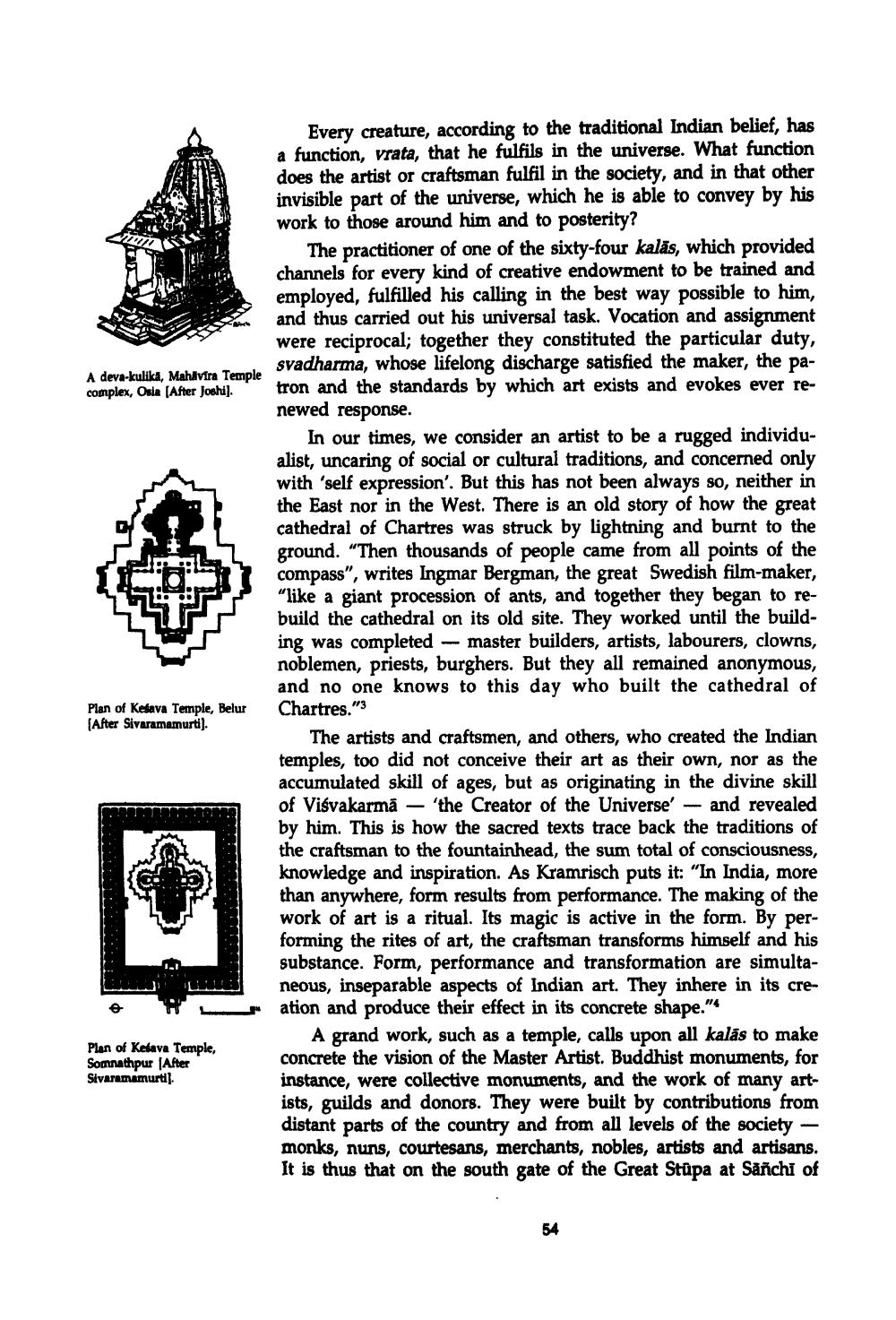________________
.
V
A deva-kulika, Mahavira Temple complex, Osla (After Joshi).
Every creature, according to the traditional Indian belief, has a function, vrata, that he fulfils in the universe. What function does the artist or craftsman fulfil in the society, and in that other invisible part of the universe, which he is able to convey by his work to those around him and to posterity?
The practitioner of one of the sixty-four kalās, which provided channels for every kind of creative endowment to be trained and employed, fulfilled his calling in the best way possible to him, and thus carried out his universal task. Vocation and assignment were reciprocal; together they constituted the particular duty, svadharma, whose lifelong discharge satisfied the maker, the patron and the standards by which art exists and evokes ever renewed response.
In our times, we consider an artist to be a rugged individualist, uncaring of social or cultural traditions, and concerned only with 'self expression'. But this has not been always so, neither in the East nor in the West. There is an old story of how the great cathedral of Chartres was struck by lightning and burnt to the ground. "Then thousands of people came from all points of the compass", writes Ingmar Bergman, the great Swedish film-maker, "like a giant procession of ants, and together they began to rebuild the cathedral on its old site. They worked until the building was completed - master builders, artists, labourers, clowns, noblemen, priests, burghers. But they all remained anonymous, and no one knows to this day who built the cathedral of Chartres."
The artists and craftsmen, and others, who created the Indian temples, too did not conceive their art as their own, nor as the accumulated skill of ages, but as originating in the divine skill of Višvakarmā — 'the Creator of the Universe - and revealed by him. This is how the sacred texts trace back the traditions of the craftsman to the fountainhead, the sum total of consciousness, knowledge and inspiration. As Kramrisch puts it: "In India, more than anywhere, form results from performance. The making of the work of art is a ritual. Its magic is active in the form. By performing the rites of art, the craftsman transforms himself and his substance. Form, performance and transformation are simultaneous, inseparable aspects of Indian art. They inhere in its creation and produce their effect in its concrete shape."
A grand work, such as a temple, calls upon all kalas to make concrete the vision of the Master Artist. Buddhist monuments, for instance, were collective monuments, and the work of many artists, guilds and donors. They were built by contributions from distant parts of the country and from all levels of the society - monks, nuns, courtesans, merchants, nobles, artists and artisans. It is thus that on the south gate of the Great Stupa at Sànchi of
Plan of Kesava Temple, Belur (After Sivaramamurti).
L
!
Plan of Kelava Temple, Somnathpur (After Sivaramamurtil




